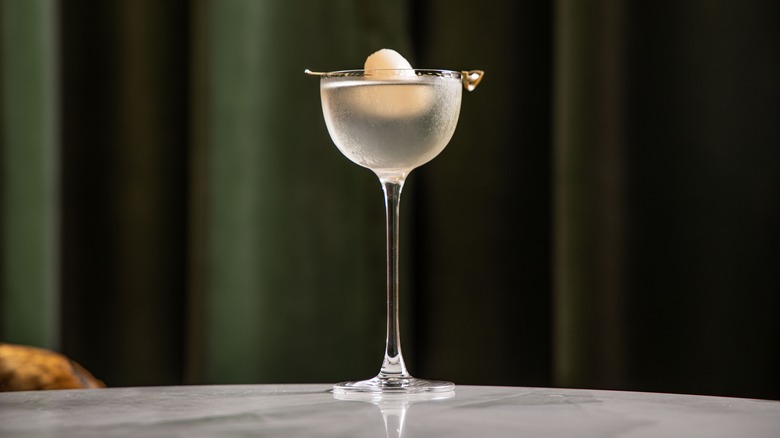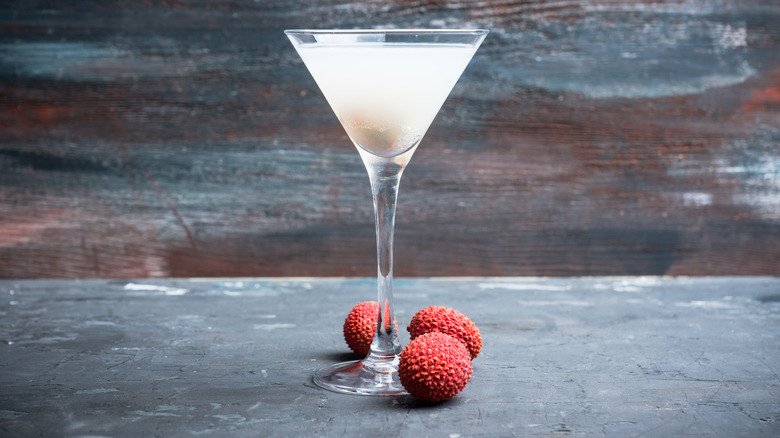We Can Thank New York City For Inventing The Lychee Martini
New York City: the epicenter of all things iconic, from pizza to cheesecake to the New Year's Eve ball. If known for nothing else, New York City is known for its robust food scene, with places like Katz, McSorley's, and more thriving amongst the curious tourists and natives alike who come here and stay here for at least one reason — to explore the culinary offerings. It is no surprise, then, that New York City is the birthplace of the lychee martini, an underrated twist on a classic cocktail.
The recipe for a lychee martini tends to vary depending on who you ask, but the most basic version includes vodka, lychee juice, lychee liqueur, vermouth, and a fresh lychee (or two) skewered over the top. If you are wondering what a lychee is, you've likely seen it before — it is red on the outside, a slightly similar look to a raspberry, but once you peel off the skin, it is a glossy white fruit that has similar sweetness and flavor profiles to watermelon and strawberries, with a hint of rose water on the back end. The drink is incredibly floral, because lychees have a strong aromatic presence.
In variants of the lychee martini recipe, some restaurants use vodka, some use canned lychee juice, and still others incorporate soju, a Korean vodka typically distilled from rice. The recipe for a lychee martini can vary depending on where you order it, but its history never changes.
The history of the lychee martini in NYC
Less mainstream than an espresso martini or an appletini, lychee martinis are an elusive cocktail, and yet one that appears on a myriad of drink menus. The drink was born of the '90s, a decade known for the boom in Asian-fusion cuisine that led to large amounts of Asian restaurants opening in New York. The subtle sweetness in a lychee martini is the perfect pairing for the spices usually incorporated into Asian meals.
The drink was first served in 1993 at Decibel, an NYC bar, but under what management is debated. The owner claims his brother began serving the lychee martini at Decibel in Japan, after which the New York location followed suit. The goal of the cocktail was to bring Japanese flavors to the U.S. beyond serving sake. However, a 1996 manager of Decibel notes that his New York-based predecessor was the one who made the first lychee martini at Decibel, and that the idea was actually born there.
A restaurant called Clay, which closed in 2002, popularized the lychee martini. Based on Mott Street, the restaurant served the martini with soju, lychee liqueur, and lychee juice. The popularity of the lychee martini lives on beyond Clay, being served in prominent NYC restaurants like Nobu, Tao, and Sip & Guzzle. The cocktail seems to represent an era where martinis weren't kept to tradition because people wanted something more — and New York City, as usual, gave the people what they wanted.

